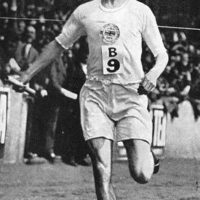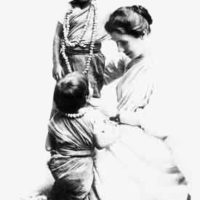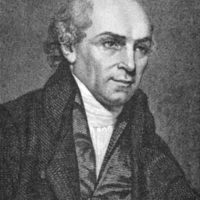“The Great Commission is not an option to be considered; it is a command to be obeyed.” – Hudson Taylor

Early Life of Hudson Taylor
Hudson Taylor was born in Yorkshire, England on May 21, 1832. His father was a chemist and Methodist lay minister. Hudson was dedicated to reaching China with the Good News from a young age.
Return to God
As a teenager, young Hudson turned away from God. In 1849, Hudson’s mother felt God was telling her to pray for her son. She locked herself into her bedroom. She was praying for hours for the salvation of Hudson. As she was praying, Hudson found a Gospel tract titled Poor Richard and he started to read it. After he had finished, he committed his life to Jesus and reaching China with the Good News.
Outreach in England
Hudson moved to a poor neighborhood in 1851 to prepare for China. There he was a medical assistant. Hudson also passed out Gospel tracts to people on the streets. In 1852, Hudson was baptized along with his sister Amelia. That same year, he started attending medical school at Royal London Hospital.
Chinese Evangelization Society
The Taiping Rebellion, which was the Civil War of China, created new hopes. The church in England was excited about the possibility for new freedom for the Gospel to advance in China. Out of this movement came the Chinese Evangelization Society, which Hudson joined in Shanghai. He left England at the young age of 21 in September 1853, but did not reach Shanghai until March 1854.
When he arrived, Hudson found the other missionaries too worldly. They spent their time working with translators or diplomats instead of reaching the people around them with the Gospel.
Hudson went on 18 preaching tours throughout the vicinity of Shanghai. Despite the fact he brought along medical supplies, his tours were largely unsuccessful with little converts. He also handed out Gospel tracts with little success. The Chinese simply weren’t interested in what these foreign missionaries with black overcoats had to say. Instead, they referred to the missionaries as “Black Devils.”
After this, Hudson decided to dress as a native. He wore the traditional dress, shaved his forehead and styled his hair in a pigtail, like the Chinese men did. He also decided to move inland. Most of the missionaries were staying on the shore where the Gospel had already been heard. Even though no missionaries were permitted into inland China; Hudson refused to let these restrictions stop him from going.
William Burns
In 1855, Hudson Taylor started working with William Burns. William Burns was a Scottish evangelist who worked in China. Hudson and William made their way to inland China together. William was a spiritual father to Hudson as Hudson was an influence to William. When William saw how much the Chinese respected Hudson that they invited him into their homes, he began dressing as a native too. Hudson and William had to part ways eventually because of medical reasons.
No Funds
In 1857, The Chinese Evangelization Society did not have the funds to pay their missionaries, so Taylor resigned from the society. Instead, he decided to be an independent missionary. No longer would Hudson depend on men to provide his funds. He would not ask anyone for funds but instead pray to God for his needs, much like George Müller. That same year, he married Maria Dyer. Maria Dyer was the adopted daughter of Rev. Samuel Dyer of the London Missionary Society.
Chinese Inland Missions
In 1861, Hudson Taylor became seriously ill and had to return to England. While in England, Hudson founded the Chinese Inland Missions, a society that would reach out to inland China and Mongolia with the Gospel.
During his recovery, Hudson continued his work of translating the Bible into Chinese. He also went to churches and spoke about the need for more missionaries in China. Some of these churches had prominent pastors of the time including Charles Spurgeon, who was pastor of the Metropolitan Tabernacle. As he went from church to church, one of Hudson’s greatest hopes was to see new recruits come in for the society. He was distressed by their lack of care for the lost in China. Eighteen missionaries and their families were recruited for service with the Chinese Inland Missions This team was known as the Lammermuir team. In the coming years, the Chinese Inland Missions would make up half of the missionary force in China.
At first, there was controversy behind the methods used by Hudson. He believed the only way the Chinese could be reached was through the missionaries dressing as the Chinese. He also sent single women inland, which was thought to be dangerous. The people he recruited also had problems with his methods.
One recruit accused Hudson of being a tyrant for the way he pushed them. That recruit was sent back to England.
The missionaries were to travel to a village in groups of two or three. They were to go out and preach the Gospel in villages. Their goal was to start a church and set up mission stations. By the end of 1866, there were 24 missionaries in four mission stations.
The team was divided for a time which limited their effectiveness in witnessing. It was not until the death of Hudson daughter Grace, that the recruits realized he cared for them more than his family. After her death, the team unified.
Hard Work Ethic
Hudson worked hard, and he expected the other missionaries to do the same.
On multiple occasions, Hudson went back to England either due to sickness or to seek recruits. On one such trip to England, the Studd family famous for playing cricket, converted to Christianity. One brother, C.T. Studd would later become a missionary in China.
Because of Hudson’s efforts, 225 missionaries were serving with the China Inland Missions.
In 1868, The Taylors set up a mission station in Yangzhou. Riots started and the mission station was burned and looted. There was an international outrage over Hudson’s and the other missionaries’ work, despite the fact he never called for military intervention in the situation. After this, British official’s ordered missionaries to leave China, but the Taylors continued their work in Yangzhou.
Boxer Rebellion
In 1900, the Boxer Rebellion broke out. The Boxer Rebellion was an anti-foreigner movement in China especially targeting the opium trade of the British and foreign missionaries. Many missionaries were sent back to their homes, but the China Inland missionaries were able to stay in China despite the opposition. Hudson was distressed by the news. China Inland Missions was affected by the rebellion more than any other missions organization, with 58 missionaries and 21 children killed. That same year, Hudson broke down physically and mentally. This caused him to step down from being the director of China Inland Missions in 1902.
Death
Hudson continued to take short trips to China to check on the work being done by the missionaries of the Chinese Inland Missions. On his eleventh trip in 1905, he died in Zhenjiang where his first wife Maria, had died years earlier. His grave had been destroyed by the Cultural Revolution in the 1960s. A Chinese church was later put on the site and a memorial set up in his honor.
Legacy
Even after Hudson died, the work he started continues on. The China Inland Missions is now known as Overseas Missionary Fellowship. Over the years, the work of Overseas Missionary Fellowship has been expanded from two countries to 19 countries. They work in countries such as North Korea and Cambodia, where many missionaries are restricted. Hudson also influenced the work of other missionaries, including Amy Carmichael and CT Studd, would later become a missionary in China because of hearing Hudson speak.




